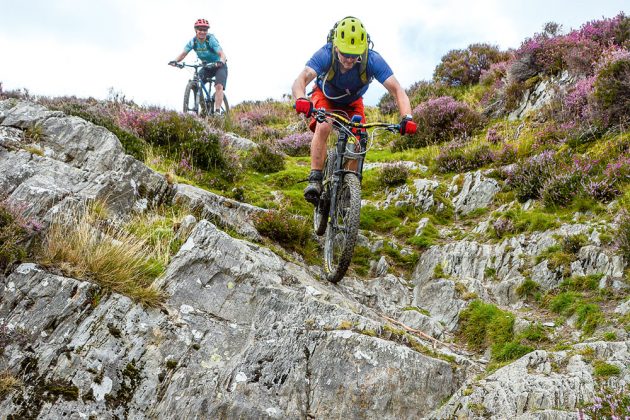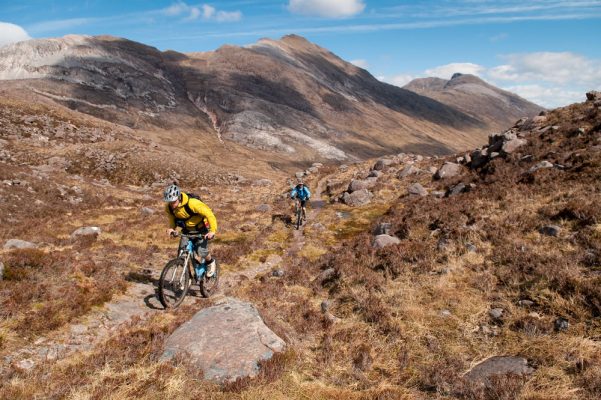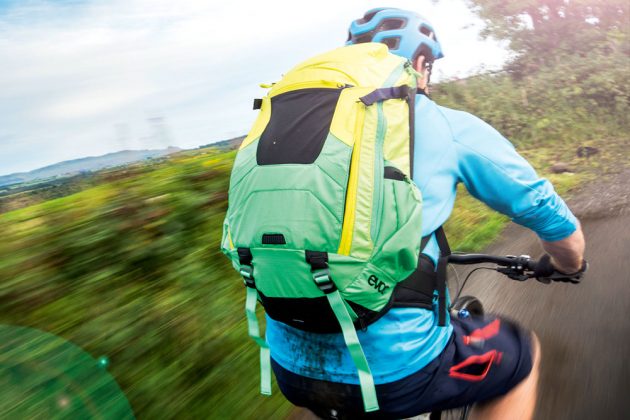Big Mountain Guide
Big mountains are the testing ground for your technique, preparedness, and ability to adapt to change. Here’s how to tackle the common problems you’ll face.
>>> What to take with you on a mountain bike ride
Words by Andy Barlow
Trail centres are great for a quick, familiar loop. In our world of mountain biking they almost act as an indoor climbing wall. Everything is graded, colour coded, purpose built, and there’s generally some sort of staff or minder that looks after the place. If you want to experience real mountain biking, however, it takes place far off into the hills, in more remote locations and on trails that aren’t really designed for riding.

Not designed just for bikes
The trails on the way down will be designed for all trail users; not just mountain bikers, so you’ll have to pay them a little more respect than your usual quiet corner of the woods. No skidding, no straying off the path, and no cornering so hard you rip the ground up.
Instead look for smooth, clean lines that will allow you to keep rolling. If something does pop out of nowhere, and it will, you need to be able to react without panicking. Remember and give yourself plenty room to move by staying close to your bike, and you’lll be able to handle the larger, unusual shapes that were never designed to be ridden.
How to carry your bike
There are going to be times when you have to finally accept that you’re just not going to be able to ride the trail. Whether it’s for a stream crossing, a steeper part of the trail, or even if it’s just too damn gnarly to ride! In these places your only option will be to shoulder your bike and carry on.
Make sure you don’t pick your bike up by its dropper post. At first the saddle will be fixed and it will appear that it’s okay, but in time you’ll put stress on the seals in a way that it was never designed to handle. This will ultimately result in you having to service it more regularly and possibly causing it damage. Instead pick your bike up by the top tube.
Shoulder your bike. Today’s full suspension designs don’t really leave a lot of room to get your arm through the frame like a cyclocross rider would. Instead you should be able to grab your top tube next to the seat post and throw it up onto your shoulder like you would if you were a Littlewoods jacket model. Think 80s shoulder pads and big hair. Once up there you can always transfer your hand closest to the bike to your forks for a more comfortable grip.

Tackle big climbs
The secret to lasting all day is to pace yourself. You’re not really going to be in an environment where you can go as fast as you can because you need a certain consideration for other outdoor enthusiasts. Instead the enjoyment will come from taking yourself into the middle of nowhere and experiencing something, or somewhere, you’ve never been to before. Take it easy. You’ll need that energy to get home again later.

Be prepared
The current trend is to lighten what you carry by getting everything off the bike. Trust us – this is not the time or place for that. If something goes wrong, and if it does so it’ll happen very quickly, there might not be anyone along to help you out for quite a while. Take everything that you think you might need; a silver foil blanket, a warm layer, as many spares and tools as you think appropriate, and plenty food and water. Remember to check the weather as well. You want to be as self sufficient as you can be for the adventure of a lifetime(or maybe just your lunchtime).




